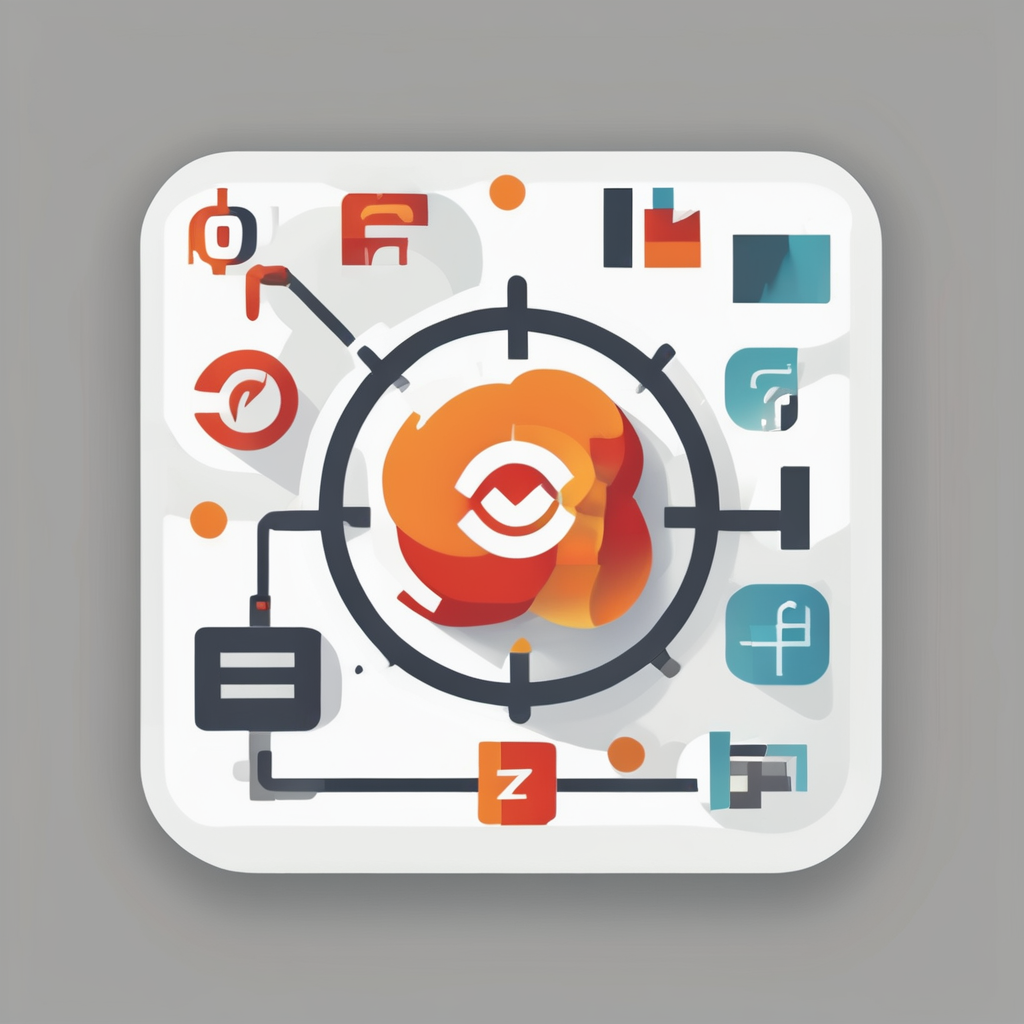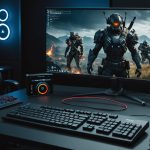Understanding Virtual Reality and PC Optimization
Virtual reality (VR) technology is transforming how we experience digital worlds, offering immersive environments that captivate our senses. However, to fully enjoy these virtual realms, optimizing your PC is paramount. VR optimization involves fine-tuning your computer settings to ensure smooth and seamless experiences.
Importance of VR Optimization
The importance of optimizing PC settings for VR cannot be overstated. Without appropriate settings, users may encounter lag, low frame rates, or even motion sickness, detracting significantly from the overall enjoyment. Addressing these issues starts with understanding key components that affect VR performance.
This might interest you : Top tips for expert cable management in your pc build
Key Components Affecting VR Performance
- Graphics Processing Unit (GPU): The GPU plays a pivotal role in rendering visuals, making a high-performance unit essential for a fluid experience.
- Central Processing Unit (CPU): Besides the GPU, a powerful CPU ensures quick data processing, reducing latency.
- RAM: Adequate memory helps in managing multiple applications and handling extensive data required in VR.
By focusing on VR optimization, you can enhance your VR experience, allowing for breathtaking visuals and immersive storytelling that make virtual worlds come to life.
Essential PC Specifications for Optimal VR Performance
When building a VR-ready PC, ensuring that your hardware meets the recommended specs for VR is crucial for a seamless experience. At the core of this setup are the GPU, CPU, and RAM, which together dictate your system’s capability to deliver immersive virtual environments.
In parallel : Liquid cooling vs. air cooling in pcs: exploring the benefits of a cooler choice
Minimum and Recommended Hardware Specifications
A high-performance Graphic Processing Unit (GPU) is necessary as it handles the complex visuals required in VR. While a minimum GPU might be capable of basic VR tasks, a recommended one ensures fluidity and detail. At the same time, the Central Processing Unit (CPU) must be powerful enough to process large data volumes quickly, minimizing latency.
Adequate RAM is also vital, as it supports the processing of extensive data and multitasking within VR applications. Hardware compatibility is paramount; components must seamlessly work together to avoid bottlenecks that hinder your VR adventures.
Upgrading individual parts may offer significant improvements over time without the need to rebuild your entire system. Focusing on components like the GPU and CPU first can yield immediate performance enhancements, ensuring your setup remains in line with evolving VR hardware requirements.
Graphics Settings Adjustment for Enhanced Visuals
Virtual reality’s potential truly shines when users optimize graphics settings for VR to elevate their visual encounters. Perfecting your graphics is crucial for VR visual quality that stands out in any experience.
Resolution Settings
Balancing resolution and performance is vital. Higher resolutions yield clearer imagery but demand more processing power. For instance, reducing resolution can boost performance on modest hardware, while high-end setups can handle ultra-high settings effortlessly.
Texture Quality
Texture quality contributes significantly to the realism of virtual environments. Options range from low to ultra settings—the higher, the smoother and more detailed the visuals. However, opting for ultra settings without sufficient power may lead to performance dips.
Anti-Aliasing Techniques
Anti-aliasing smooths jagged lines in VR, enhancing visual appeal. Techniques like MSAA and FXAA differ in impact; MSAA offers superior quality but can strain resources, while FXAA is less demanding but slightly less effective for stunning results.
Perfecting these settings tailors VR graphics to individual preferences, ensuring an engaging and visually rewarding experience. These adjustments can mean the difference between merely functional visuals and a truly awe-inspiring VR journey.
Refresh Rate and Display Configuration
Optimizing your VR display settings and understanding the role of refresh rate is critical in creating a smooth and immersive VR experience. A high VR refresh rate ensures that the visuals remain fluid, reducing the likelihood of motion blur and nausea. Generally, VR experiences are more comfortable and realistic at 90Hz or higher, allowing users to enjoy prolonged sessions.
Understanding Refresh Rates
Refresh rates in VR determine how frequently the image is updated per second. A higher rate results in smoother movement and a reduction in motion artifacts. Configuring your system for optimal refresh rates involves ensuring your VR-ready PC hardware supports such settings, particularly in the GPU, which drives these capabilities.
Best Practices for Display Settings
Implementing the right display settings for VR contributes to an immersive experience. Adjusting brightness, contrast, and colour depth can dramatically impact visual clarity and comfort. Striking a balance ensures that details are vividly rendered while maintaining performance efficiency.
Multi-Monitor Setups
For professionals or enthusiasts using multiple monitors, multi-monitor setups can be configured to offer expansive virtual environments. Synchronising refresh rates across displays further enhances transition smoothness, crucial for dynamic virtual applications.
Tools and Software for VR Optimization
Optimizing VR performance often involves leveraging the right VR optimization tools and software to adjust settings and enhance experiences seamlessly. These tools are pivotal for monitoring and fine-tuning various aspects of your VR system.
Recommended Tools for Monitoring VR Performance
Tools like MSI Afterburner and NVIDIA GeForce Experience provide comprehensive insights into system performance. They assist users in tracking frame rates, GPU usage, and temperature levels, ensuring optimal operation. For a streamlined experience, incorporating these tools simplifies detecting potential bottlenecks or inefficiencies.
Software Options for Adjusting Graphics and Settings
Dedicated software for VR settings adjustment like Oculus Tray Tool or SteamVR allows users to tweak graphics configurations to match their system’s capabilities. Such programs can customize super sampling levels or adjust ASW settings to enhance visual quality without sacrificing performance. Competent usage of these tools can bridge the gap between hardware limitations and desired visual fidelity.
Keeping Software Updated
Maintaining up-to-date software is crucial for sustaining VR performance. Drivers and firmware updates by GPU manufacturers improve compatibility and possibly introduce new features and stability improvements. Thus, regular updates and implementing recommended software settings can make a significant difference.
Troubleshooting Common VR Performance Issues
Even with robust VR hardware, users may still face performance issues. VR troubleshooting involves identifying and resolving these common VR problems to maintain an optimal experience.
Frame Rate Drops
A question arises: What causes frame rate drops in VR? Drops may result from overburdened GPU capabilities or insufficient RAM. To fix this, adjusting graphics settings to balance load can help stabilize frame rates. Reducing resolution or texture quality ensures resources are not overstretched.
Lag and Motion Sickness
How does one address lag and motion sickness? Lag can disrupt your session, while motion sickness stems from inadequate refresh rates. Rectify lag through network configurations in multiplayer applications or upgrading to better PC components. For motion sickness, increasing the refresh rate or activating motion smoothing features in your VR software can provide relief.
Software Errors
What about common software errors in VR systems? They often manifest as application crashes or stuttering. Ensure your system runs the latest updates for both the operating system and VR applications. Software patches frequently address known issues, enhancing overall stability. Preemptively checking PC compatibility and performance stats helps spot inefficiencies early.











